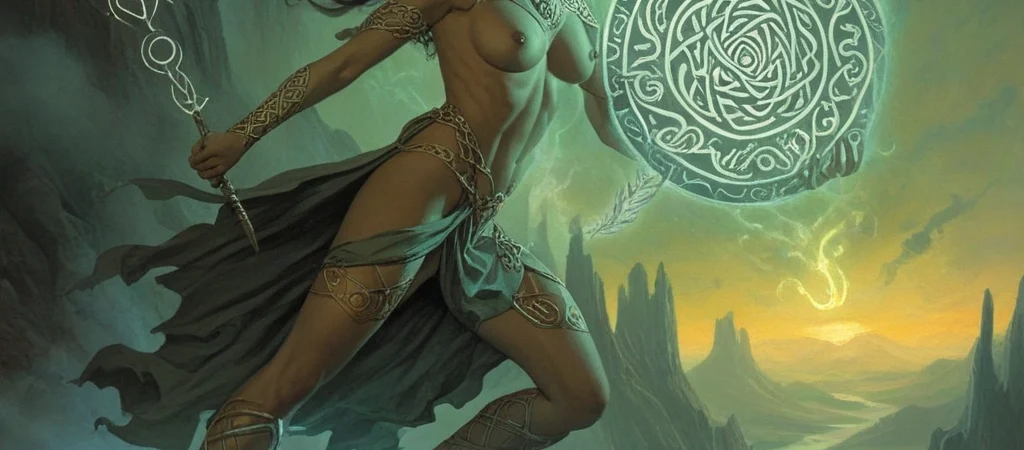Section 1: The Origins of Erotic Art in Ancient Civilizations
Erotic art has been a part of human expression since the dawn of civilization, serving as a means to explore sexuality, fertility, and the human body. The earliest known examples of erotic art date back to prehistoric times, with artifacts and cave paintings depicting sexual acts and nudity. These primitive representations often carried symbolic or ritualistic significance, reflecting the deep-seated human fascination with reproduction and the mysteries of life.
One of the most renowned examples of early erotic art comes from the Paleolithic era, specifically the “Venus figurines.” These small, often portable sculptures of women, found in various parts of Europe and Asia, are characterized by their exaggerated female features, particularly the breasts and hips. The most famous of these is the “Venus of Willendorf,” a limestone figurine discovered in Austria, believed to be around 25,000 to 30,000 years old. While the exact purpose of these figurines remains a subject of debate, they are widely interpreted as symbols of fertility and female power ^1^.
Moving forward in time, ancient Mesopotamian art also features erotic themes. The “Love in a Garden” relief, discovered in the palace of Ashurnasirpal II in Nimrud, depicts a couple engaged in sexual intercourse within a lush garden setting. This artifact, dating back to the 9th century BCE, showcases the integration of eroticism with nature and suggests a cultural acceptance of sexuality as a natural and positive force ^2^.
In ancient Egypt, erotic art was often intertwined with religious and funerary practices. The “Turin Erotic Papyrus,” dating from around 1150 BCE, is a notable example. This scroll features a series of vignettes depicting various sexual positions and acts, offering insights into the sexual practices and attitudes of ancient Egyptians. The presence of such explicit content in a funerary context suggests that sexuality was seen as a vital part of life and, by extension, the afterlife ^3^.
Section 2: Erotic Art in Classical Antiquity
The classical civilizations of Greece and Rome produced some of the most iconic and enduring examples of erotic art. In ancient Greece, the human form was celebrated in all its aspects, including sexuality. The “Pompeian Erotic Art,” discovered in the ruins of Pompeii and Herculaneum, provides a vivid glimpse into the erotic life of the Romans. These frescoes, mosaics, and sculptures often depict explicit sexual scenes, revealing a society that was open and playful in its approach to sexuality ^3^.
One of the most famous examples is the “Leda and the Swan” motif, which appears in various forms of Greek art. This mythological scene, depicting the god Zeus in the form of a swan seducing the mortal woman Leda, was often portrayed with explicit detail, emphasizing the sensual and erotic aspects of the story. The “Warren Cup,” a Roman silver cup from the 1st century CE, is another remarkable example. This artifact features intricate reliefs of two explicit homosexual scenes, offering a rare and valuable insight into the sexual mores of ancient Rome ^2^.
In classical art, the human body was often idealized, and eroticism was seen as a celebration of beauty and desire. The “Sleeping Hermaphrodite,” a Roman marble sculpture based on a Greek original, is a striking example of this idealization. The figure, depicted as a reclining hermaphrodite, combines both male and female attributes, suggesting a transcendence of gender and a celebration of the androgynous form ^2^.
The Greeks and Romans also used erotic art in their religious and philosophical contexts. The “Priapus” statues, often placed in gardens and vineyards, were believed to protect against theft and ensure fertility. These phallic symbols were not only erotic but also carried a deeper significance, reflecting the ancient belief in the power of sexuality to bring about abundance and protection ^2^.
Section 3: Medieval and Renaissance Erotic Art
The Middle Ages in Europe are often perceived as a time of sexual repression, but this period also saw the creation of erotic art, albeit often hidden or veiled in symbolism. Medieval manuscripts, such as the “Tres Riches Heures du Duc de Berry,” feature subtle erotic imagery, including scenes of courtly love and sensual encounters. These illustrations, while not always explicitly erotic, carry a strong undercurrent of desire and intimacy ^2^.
The Renaissance marked a revival of classical ideals, including a renewed interest in the human form and sexuality. Artists like Sandro Botticelli and Titian created works that, while not always explicitly erotic, often explored themes of love, desire, and the sensual. Botticelli’s “The Birth of Venus” is a prime example, depicting the goddess Venus emerging from the sea, a symbol of both beauty and fertility ^2^.
The “Farnese Hercules,” a Roman marble sculpture rediscovered during the Renaissance, became a symbol of male virility and strength. This statue, with its exaggerated musculature and dynamic pose, was often interpreted as an erotic celebration of the male form. Similarly, the “Venus de Milo,” while more subtle in its eroticism, has long been admired for its idealized representation of female beauty and sensuality ^2^.
During the Renaissance, erotic art also found expression in more explicit forms. The “Modena Erotic Drawings,” a series of sketches attributed to Leonardo da Vinci, feature detailed studies of male and female genitalia, as well as various sexual positions. These drawings, while primarily anatomical, reveal a fascination with the erotic potential of the human body ^2^.
The Renaissance also saw the emergence of erotic literature, such as “The Decameron” by Giovanni Boccaccio, which often featured explicit sexual content. This literary tradition, combined with the visual arts, created a rich tapestry of erotic expression that continued to influence Western art and culture ^2^.
In conclusion, early erotic art spans a wide range of civilizations and time periods, each offering unique perspectives on sexuality, desire, and the human form. From the prehistoric Venus figurines to the explicit scenes of Pompeian art, and from the idealized forms of classical antiquity to the symbolic expressions of the Middle Ages and Renaissance, erotic art has been a constant and evolving reflection of human sexuality and culture.
6 Citations
Unlocking Ancient Pornography: Insights into Sexuality in Historical Art and Literature –
https://knightstemplar.co/ancient-pornography/
History of erotic depictions – Wikipedia
https://en.wikipedia.org/wiki/History_of_erotic_depictions
Erotic art – Wikipedia
https://en.wikipedia.org/wiki/Erotic_art
Unlocking Ancient Pornography: Insights into Sexuality in Historical Art and Literature –
https://knightstemplar.co/ancient-pornography/
History of erotic depictions – Wikipedia
https://en.wikipedia.org/wiki/History_of_erotic_depictions
Erotic art – Wikipedia
https://en.wikipedia.org/wiki/Erotic_art

